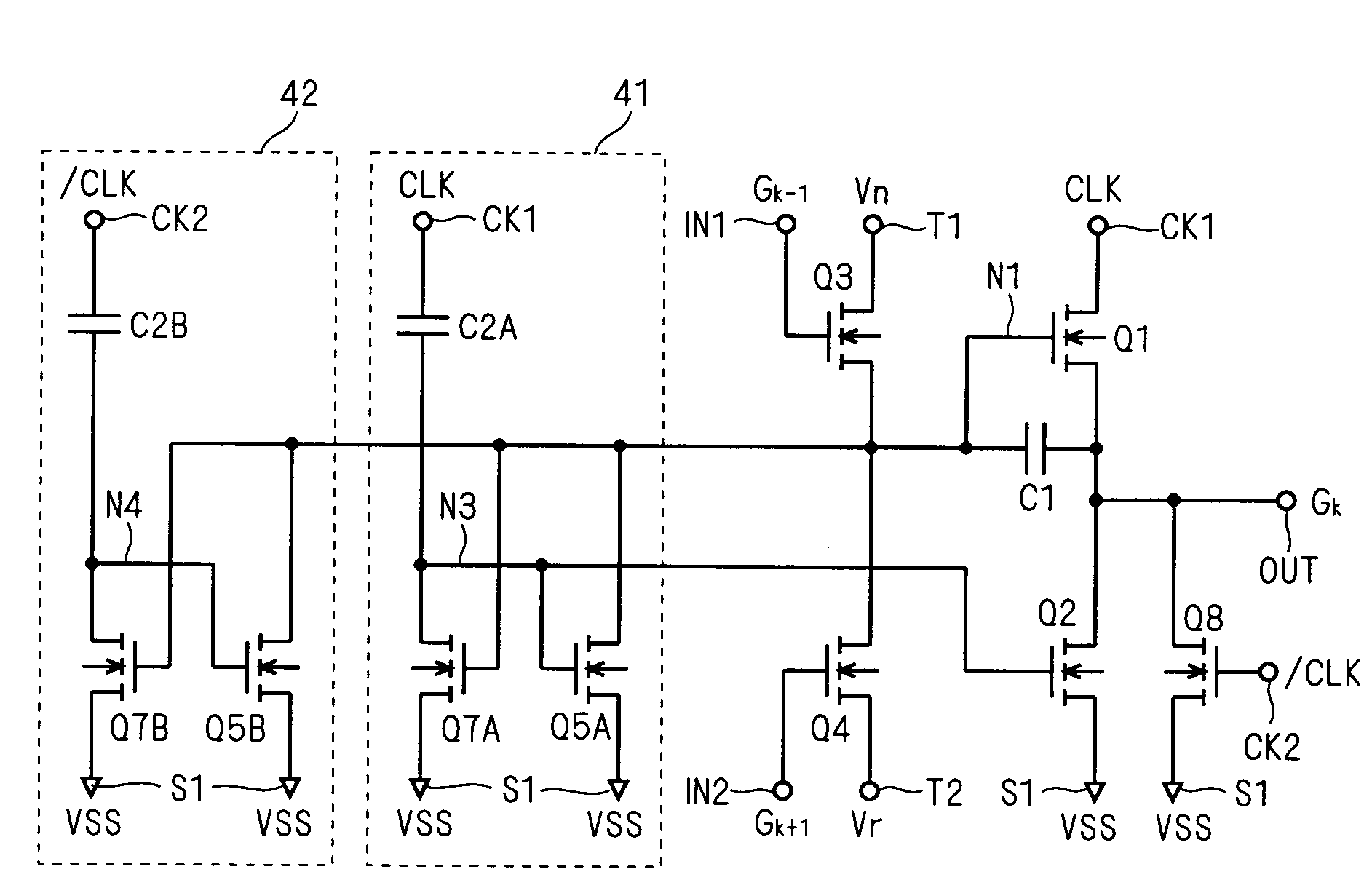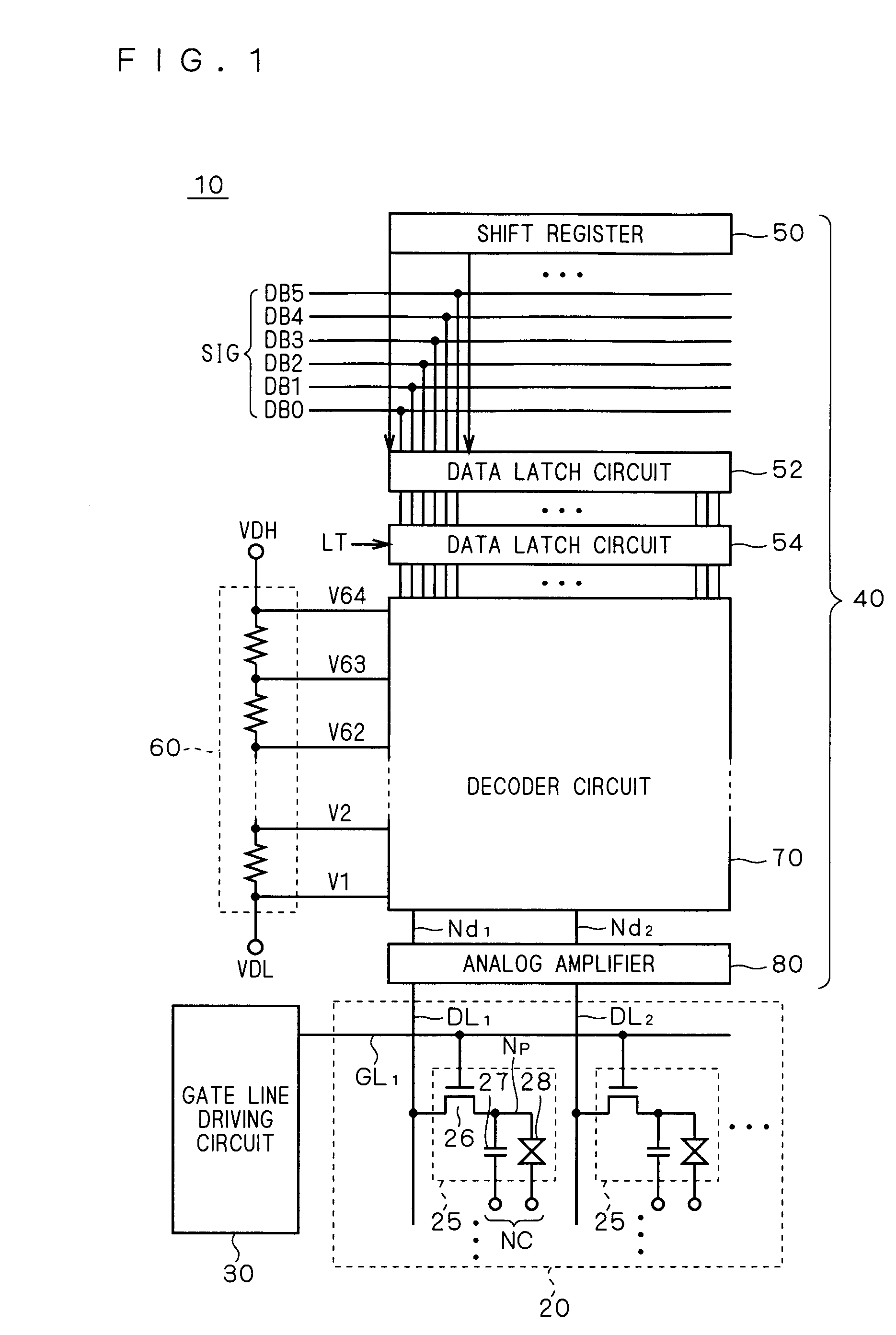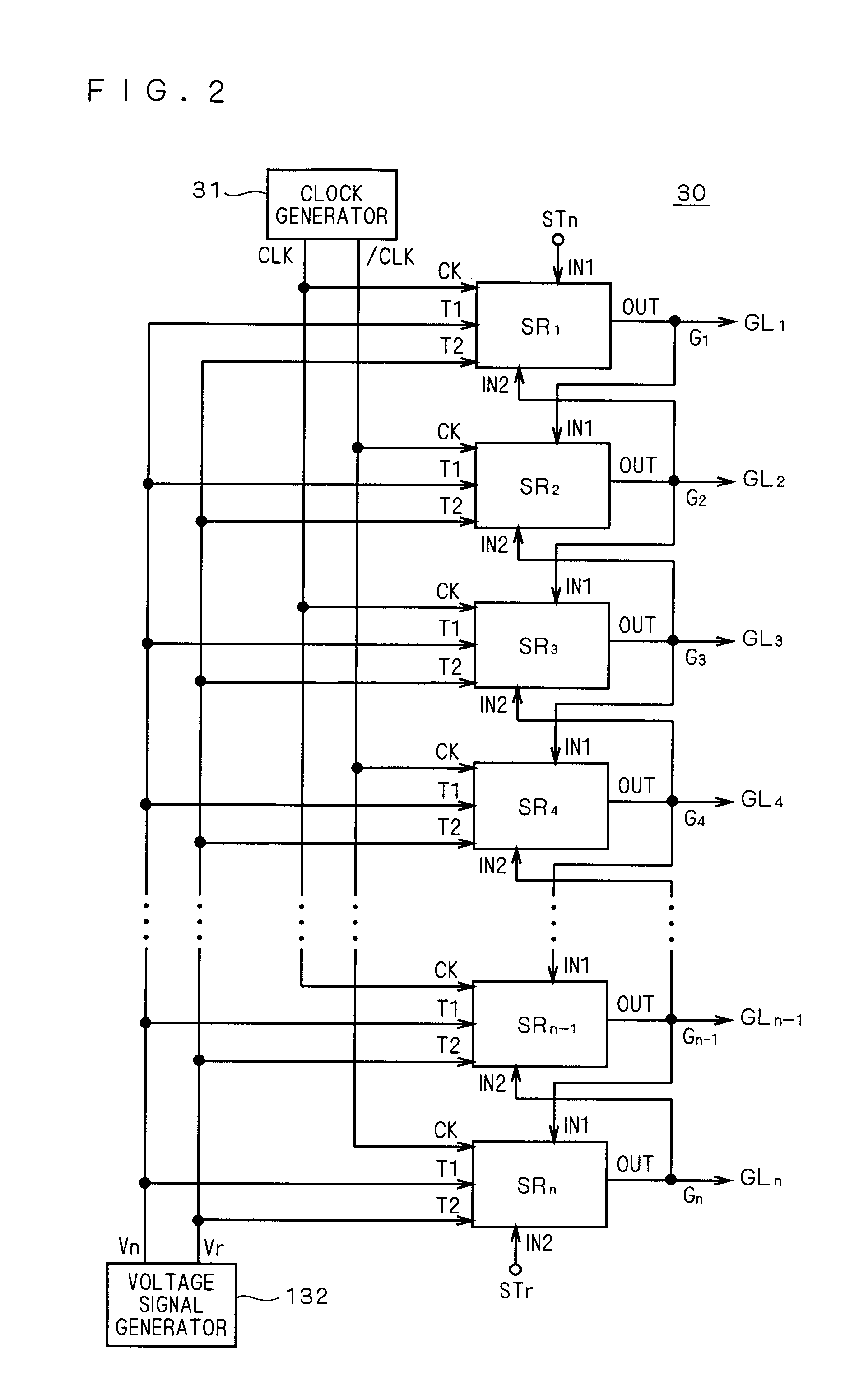Shift register circuit and image display apparatus containing the same
a register circuit and image display technology, applied in logic circuits, digital storage, instruments, etc., can solve problems such as gate lines being activated, affecting the drive capability of the second transistor, and unable to pass curren
- Summary
- Abstract
- Description
- Claims
- Application Information
AI Technical Summary
Benefits of technology
Problems solved by technology
Method used
Image
Examples
first preferred embodiment
[0064]FIG. 1 is a schematic block diagram showing a configuration of a display apparatus according to a first preferred embodiment of the present invention. It shows an overall configuration of a liquid crystal display 10 as a representative example of the display apparatus.
[0065]The liquid crystal display 10 includes a liquid crystal array 20, a gate line driving circuit (scanning line driving circuit) 30, and a source driver 40. As will be clear from the following description, a bidirectional shift register according to the preferred embodiments of the present invention is mounted in the gate line driving circuit 30 and is formed integrally with the liquid crystal array 20.
[0066]The liquid crystal array 20 includes a plurality of pixels 25 arranged in a matrix. Each of gate lines GL1, GL2, . . . (hereinafter also referred to generically as “gate lines GL”) is provided for each row of pixels (hereinafter also referred to as a “pixel line”), and each of data lines DL1, DL2, . . . (h...
second preferred embodiment
[0165]Hereinbelow, variations of the first pull-down circuit 41 and the second pull-down circuit 42 in the unit shift register SR according to the present invention will be described. As will be described later, as to the first pull-down circuit 41, the one described in the first preferred embodiment (FIG. 8) is basically preferable. Thus, the following description is mainly related to the details of variations of the second pull-down circuit 42.
[0166]FIG. 11A is a circuit diagram of the second pull-down circuit 42 according to a second preferred embodiment. FIG. 11A shows an example that the clock signal CLK is inputted to the first clock terminal CK1 and the clock signal / CLK is inputted to the second clock terminal CK2 (the same applies to each circuit diagram of FIG. 12 and following drawings).
[0167]According to this preferred embodiment, in contrast to the second pull-down circuit 42 of FIG. 8, the capacitive element C2B is replaced by transistors Q6B and Q9B. The transistor Q6...
third preferred embodiment
[0177]FIG. 12A is a circuit diagram of the second pull-down circuit 42 according to a third preferred embodiment. According to this preferred embodiment, in contrast to the circuit of FIG. 11A, the transistor Q7B is replaced by two transistors Q7Bn and Q7Br. The transistor Q7Bn is connected between the node N4 and the first power supply terminal S1 so that its gate is connected to the first input terminal IN1. The transistor Q7Br is connected between the node N4 and the first power supply terminal S1 so that its gate is connected to the second input terminal IN2
[0178]The on-resistance of the transistor Q6B is set sufficiently higher than those of the transistors Q7Bn and Q7Br so that a pair of the transistors Q6B and Q7Bn and a pair of the transistors Q6B and Q7Br each form a ratio inverter. In other words, the on-resistances of the transistors Q7Bn and Q7Br are set sufficiently lower then that of the transistor Q6B. Thus, assuming that the second clock terminal CK2 is at the HIGH l...
PUM
 Login to View More
Login to View More Abstract
Description
Claims
Application Information
 Login to View More
Login to View More - R&D
- Intellectual Property
- Life Sciences
- Materials
- Tech Scout
- Unparalleled Data Quality
- Higher Quality Content
- 60% Fewer Hallucinations
Browse by: Latest US Patents, China's latest patents, Technical Efficacy Thesaurus, Application Domain, Technology Topic, Popular Technical Reports.
© 2025 PatSnap. All rights reserved.Legal|Privacy policy|Modern Slavery Act Transparency Statement|Sitemap|About US| Contact US: help@patsnap.com



